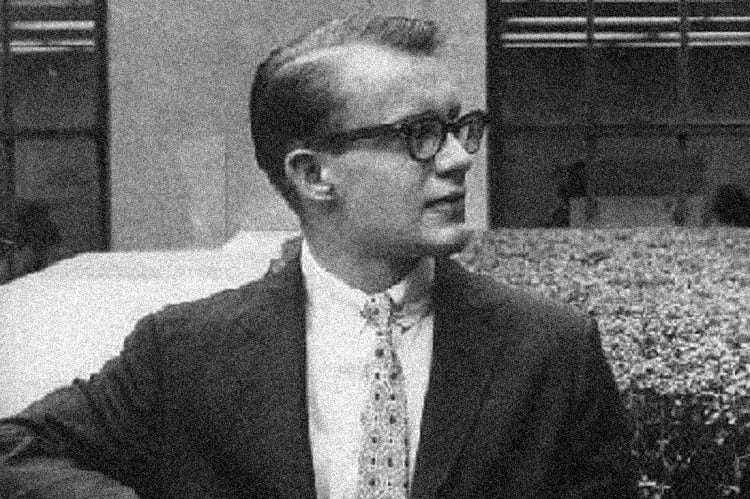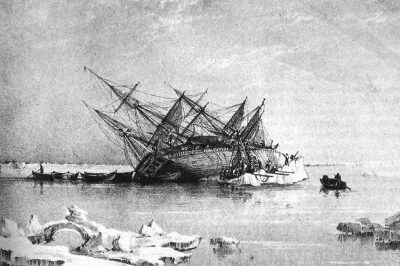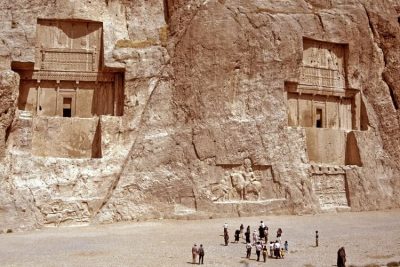The Disappearance of Michael Rockefeller: One of the Most Enduring Unsolved Modern Mysteries
Share

Michael Rockefeller. (HurayforZay / Wikimedia Commons)
Michael Rockefeller was the son of American businessman and future United States Vice-President, Nelson Rockefeller, and was a fourth-generation descendant of the influential and famous Rockefeller family. On 19th November 1961, Michael Rockefeller mysteriously disappeared during an expedition to the Asmat province of Netherlands New Guinea. This region is now a part of the Indonesian province of Papua. His disappearance is one of the most enduring and prominent unsolved mysteries of the 20th century. Michael Rockefeller was neither recovered nor rescued despite an extensive search operation overseen by his father, Nelson Rockefeller.
Michael Rockefeller: An exceptional individual
Michael Rockefeller was the youngest child of Nelson Rockefeller and Mary Todhunter Clark Rockefeller. Rockefeller’s early education was completed at The Buckley School, a premium boarding institution based in upstate New York. After graduating from there, he went on to study at the Phillips Exeter Academy in New Hampshire. Michael Rockefeller was an exceptional student and he was also a student senator and a varsity wrestler. He went on to attend Harvard University and graduated cum laude with a Bachelor of Arts in Economics and History. In 1960, he served in the United States Army as a private for six months.
After his brief military service, he went on an expedition for Harvard’s Peabody Museum of Archaeology and Ethnology to research the Dani tribe of Netherlands, New Guinea in 1960. This expedition produced Dead Birds, a documentary film about the ethnic diversity of the Netherlands-New Guinea people. Rockefeller left this expedition for a brief period, in order to study the Asmat tribe from the southern part of Dutch New Guinea, with a friend. After he returned home from the Peabody Expedition he almost immediately returned to Dutch New Guinea to further study the Asmat people and collect Asmat art.
The disappearance
On November 17, 1961, Michael Rockefeller was 5 kilometres from the New Guinea shore, with the Dutch anthropologist René Wassing, in a pontoon boat. The pontoon boat carrying Rockefeller and Wassing was swamped, and it overturned. René and Michael were set adrift in a dugout canoe that measured up to 40 feet. Their local guides rose to the occasion and tried to swim to their rescue, but were a tad too late. After drifting for some time, Rockefeller abandoned René in the boat and tried to swim to the shore. According to René, Rockefeller had said, “I think I can make it,” before making a break for it. The canoe had drifted away quite a bit, and was now 12 miles (19 km) from the shore. René was rescued the next day, but Michael Rockefeller was never seen again.
Despite an intensive, expensive and lengthy search and rescue effort mounted by Nelson Rockefeller and his considerable resources, Rockefeller’s body was not recovered. At the time, his disappearance was a major news item and can be considered a major point in the popular culture of the 1960s. As the canoe was very far from shore, the most plausible theory about his disappearance is that he succumbed to exhaustion and exposure. This probably led to him drowning.
Speculations about Rockefeller’s disappearance
There is also speculation that Rockefeller might have been attacked and eaten by sharks or saltwater crocodiles. The Betsj River of Western Papua is infested with saltwater crocodiles and sharks, which are hyper carnivorous apex predators. As headhunting and cannibalism were still prevalent in some areas of the Asmat region in 1961, there is also wide speculation that Rockefeller was captured and killed after he arrived onshore.
An American journalist Milt Machlin travelled to the same region in 1969 to investigate Rockefeller’s disappearance. After extensive investigation, he said that there was absolutely no evidence of Rockefeller being held captive or living as a Kurtz-like figure in the jungle. However, he said that there was a lot of circumstantial evidence that pointed to the idea that Rockefeller had been killed.
If Rockefeller had successfully swum to the Asmat shore, he would have arrived at the village of Otsjanep. A few months before his disappearance, several of the village elders had been killed by the imperial Dutch patrol. This provides some rationale that Rockefeller might have been killed by the Asmat people of Otsjanep as retribution. Experts say that the Asmat did not practice headhunting and cannibalism indiscriminately. Instead, the tribe only indulged in such practices for the sake of vengeance or retribution, in a vicious tit-for-tat style. It is actually quite plausible that Michael Rockefeller found himself to be an inadvertent victim of the tribe’s thirst for vengeance.
Discourse about Rockefeller in popular culture
Author Paul Toohey opined that Michael Rockefeller’s mother had solicited the services of a private investigator to investigate Rockefeller’s disappearance, in his book Rocky Goes West. Whether these claims have any truth in them is debatable, but Toohey was certain in the knowledge of the Private Investigator bartering a boat engine with the Asmat tribe, in exchange of the skulls of three men. Toohey believed, these skulls belonged to the only white men who ever fell victim to the tribe. The Investigator thereafter returned to New York and presented the skulls to Mrs Rockefeller as proof of her son’s demise. The veracity of this incident has never been proven but the History Channel reported that Mrs Rockefeller did pay a $250,000 reward to a private investigator for the final proof that her son had expired.
Keep The River On Your Right is an acclaimed documentary film where the anthropologist Tobias Schneebaum alleges that he spoke to Asmat tribesmen who recalled finding Rockefeller washed up on the riverside and eating him. In 2014, the author and investigator Carl Hoffman published a book about his investigation into Rockefeller’s disappearance. During his many visits to the village of Otsjanep, Hoffman heard stories of Rockefeller being captured and killed after washing up on the Asmat shore.
Many of the artefacts and art collected by Rockefeller are now on display at the Metropolitan Museum of Art, which is one of the world’s most renowned art museums located in New York City. His work is under the “Michael C. Rockefeller Wing”. The disappearance of Michael Rockefeller became a major event in the popular culture of the 1960s and the entire 20th century. There have been numerous books, documentaries, comics and films made that chronicle the disappearance and provide theories as to how it might have happened. In 2012, Michael Rockefeller’s twin sister Mary Rockefeller published an autobiography and memoir titled When Grief Calls Forth the Healing.
Enjoyed this article? Also, check out “Bohemian Grove: A Club for the Rich and Powerful or an All-Male Secret Society?“
Fact Analysis:
STSTW Media strives to deliver accurate information through careful research. However, things can go wrong. If you find the above article inaccurate or biased, please let us know at [email protected]













